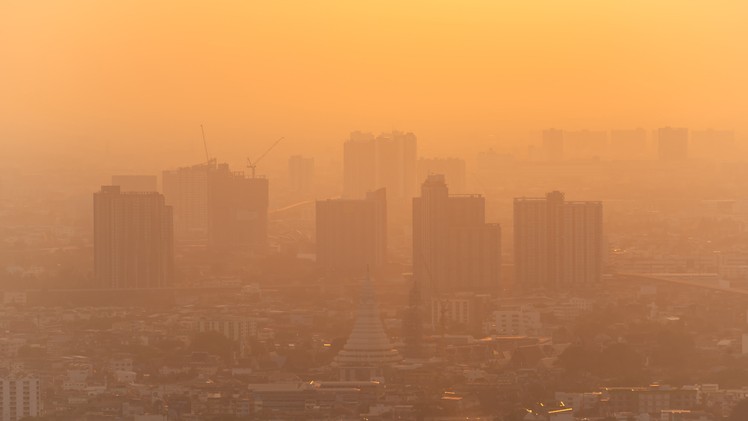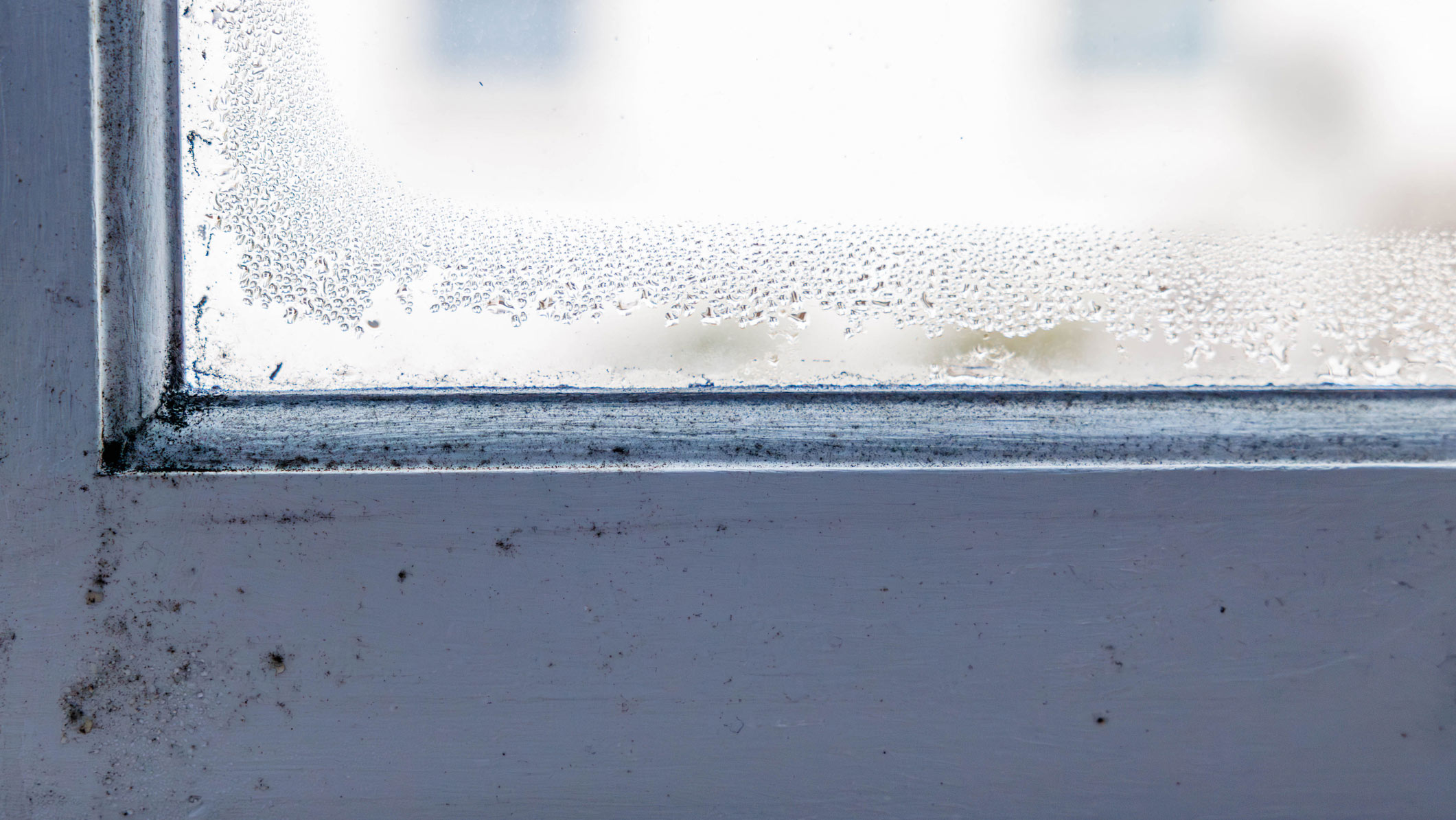
It is no secret that air pollution poses numerous risks to our health and general well-being. For this reason, most of us try to keep our homes free of airborne pollutants: we ventilate regularly, use extractor fans while cooking, keep an eye on the local Air Quality Index and perhaps even invest in one of the best air purifiers. But how many of us could actually identify and describe the symptoms of poor air quality?
In truth, this issue is far more complex than it may seem, and experts agree that there is no single best way to determine if the air around you is polluted. That’s because the signs of poor air quality can vary depending on multiple factors, including the type of airborne particles, the length of exposure and any pre-existing health conditions that may apply. Having said that, some symptoms are more indicative of air pollution than others.
"Symptoms of poor indoor air range from minor, such as headaches and fatigue, to major, including asthma, lung cancer and overall reduced life expectancy," Shahir Masri, an associate specialist in air pollution exposure assessment and epidemiology at UC Irvine, told Live Science by email. Poor indoor air quality may also leave environmental clues, such as lingering odors or large, visible particles suspended in the air, Masri said.
Here are some of the signs that you may be dealing with poor air in your home.
Irritation of the eyes, nose and throat
Coughing, sneezing, breathing difficulties and itchy, watering eyes are telltale signs of poor air quality. Many airborne pollutants can irritate our eyes, nose, throat and lungs, leading to a spike in inflammation within our respiratory systems, Dr. Purvi Parikh, an allergist with NYU Langone Health and Allergy and Asthma Network, told Live Science by email.
Our bodies try to protect themselves from these airborne invaders by narrowing the airways and ramping up mucus production, according to the U.S. Environmental Protection Agency (EPA).
Itchy, watering eyes are another indicator that your immune responses are being triggered by contaminants in the air. That is because the cornea — the clear, dome-shaped outer layer of the eye — is the most densely innervated tissue in the human body, which makes it extremely sensitive to environmental pollutants, according to a review published January 2022 in the International Journal of Environmental Research.
However, it is often difficult to pinpoint whether irritation of the eyes, nose and throat is, in fact, a direct result of exposure to indoor air pollution, Chloe Fellows, founder of Haze Environmental, a specialist air quality consultancy based in Worcestershire, England, told Live Science by email. "The effects of immediate exposure to poor air quality are similar to those from colds and other viral diseases," she said, "and some may show up shortly after a single exposure, while others are a result of repeated exposure to a pollutant."

Exacerbated symptoms of respiratory diseases
Poor air quality may cause respiratory diseases and can be directly responsible for aggravating the symptoms of pre-existing conditions like asthma, according to the Asthma and Allergy Foundation of America (AAFA).
Airborne pollutants can also trigger allergies, Dr José Costa, a consultant pediatrician at the Children's Allergy Clinic in the U.K., told Live Science. "A high concentration of airborne allergens in the home can exacerbate allergy symptoms, such as blocked, runny nose and sneezing, which can potentially develop into a condition known as allergic asthma," Costa said.
Symptoms of lung cancer can also be made worse by poor air quality, according to the American Lung Association (ALA). Airborne particles measuring less than 2.5 microns in diameter — such as smoke particles, mold spores or traffic fumes, for example — can be especially harmful. These tiny pollutants can promote lung cancer development by acting on cells that carry pre-existing cancerous mutations in lung tissue not yet affected by the disease, according to a mouse study published April 2023 in the journal Nature.
Poor air quality may also aggravate the symptoms of cystic fibrosis, a genetic disorder that impairs lung function and increases the risk of respiratory infections, according to a review published June 2022 in the journal Frontiers in Physiology.
It needs to be pointed out, however, that we still do not know enough about the effects of poor air quality on respiratory conditions. "There is a great deal of uncertainty about the concentrations or periods of exposure that are necessary to produce these health problems," Fellows said.

Dizziness and headaches
Dizziness and headaches are another common symptom of poor air quality, Dr. John McKeon, CEO of Allergy Standards, an international certification body for domestic appliances, and a principal at the Indoor Air Innovation & Research Institute in Washington, D.C., told Live Science by email.
Indoor contaminants such as carbon monoxide will often cause feelings of lightheadedness and vertigo, which can indicate that the air you’re breathing might be contaminated. Both carbon monoxide and carbon dioxide can poison you, causing tissue damage and even death if you are exposed to them for too long. Everyone is at risk of poisoning, but some groups may be more susceptible to these contaminants.
"Infants and children, seniors, people who are pregnant, and those with respiratory or heart conditions, are especially vulnerable," McKeon said.
You may also find yourself experiencing headaches if you are in an area with poor air quality. Like dizziness, headaches can be a sign of carbon monoxide poisoning. If you are in a poorly ventilated area, they can also be a sign of high carbon dioxide levels.
However, many other airborne pollutants have also been linked to headaches. For example, long-term exposure to fine particulate matter (2.5 microns and less) can increase the risk of migraines, according to a review published April 2024 in the journal Current Environmental Health Reports.

Fatigue and sleep problems
Fatigue can be another symptom of poor air quality, and it is often linked to respiratory conditions such as asthma, according to a study published July 2021 in The Clinical Respiratory Journal.
The toll that respiratory conditions take on the body can lead to someone with these conditions running out of energy faster than a healthy person, or struggling to complete basic tasks that others would find easy. If someone has active symptoms of asthma, they may also experience fatigue due to the psychological stress of trying to control their symptoms and avoid an attack.
However, you do not have to have asthma to experience fatigue caused by poor air quality. For example, a study published October 2022 in the journal Scientific Reports found that adolescents can experience more exhaustion and emotional distress when they are exposed to higher levels of airborne pollutants like nitrogen dioxide.
Poor air quality can also affect sleep. Studies have shown that exposure to airborne pollutants can have a detrimental impact on the length and quality of sleep, by affecting your breathing and the functioning of your central nervous system. However, more research is needed to understand the mechanisms behind this phenomenon, according to a review published March 2021 in the journal Sleep Medicine.

Dust and damp accumulation
Poor indoor air quality can manifest through both physical symptoms and environmental clues, Michael Don Ham, a faculty member of the International WELL Building Institute, a public benefit corporation promoting healthy building standards, told Live Science by email. "Visually, you might notice mold growth in damp areas, dust accumulation, or condensation on windows, particularly if ventilation is lacking," Ham said.
Sometimes you can even see airborne pollutants with the naked eye. "When sunlight beams through the window it will make larger particles more visible," Anthony Abate, an indoor air quality expert and vice-president and chief technology officer at AtmosAir Solutions, a sustainable indoor air purification and monitoring technology company in Fairfield, Connecticut, told Live Science by email.
Dust particles and other large pollutants can be seen up close. Smaller pollutants, on the other hand, may sometimes be seen from a distance — think of a thick layer of smog covering the sky in big cities, for example.

Odors
Persistent odors, especially from chemical sources, are another sign of poor air quality, Ham said. There are two reasons why that is the case.
Firstly, while some odor-bearing particles are relatively harmless, others can have a profound impact on our health and well-being — even more so with long-term exposure. For example, many irritating odors are caused by high concentrations of volatile organic compounds (VOCs) in the indoor air, Abate said.
Secondly, lingering smells can indicate poor ventilation. If your home does not get enough fresh air, your indoor air quality can decrease substantially.
However, you can't always trust your nose, as many airborne pollutants are not detected by our olfactory senses. Moreover, pleasant smells can give you a false sense of security, Allen Rathey, director of the Indoor Health Council, a US-based organization dedicated to promoting healthy indoor environments, told Live Science by email.
"If your home smells like roses you may have added air pollutants to the environment, courtesy of your dryer sheets, laundry detergent or plug-in wall fresheners," Rathey said. "As we now know, many of these pleasant fragrances are Trojan horses for petrochemicals that can interfere with our endocrine system and may cause illness."
This article is for informational purposes only and is not meant to offer medical advice.







